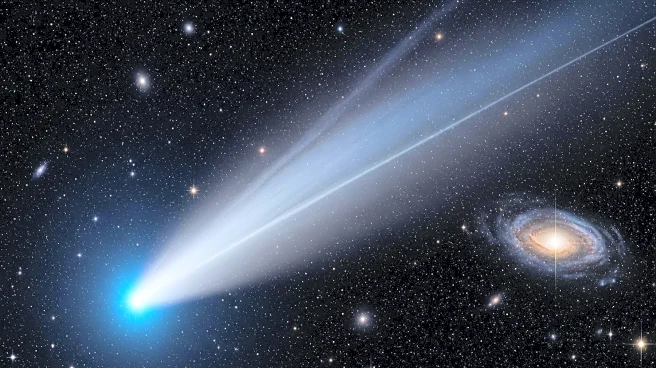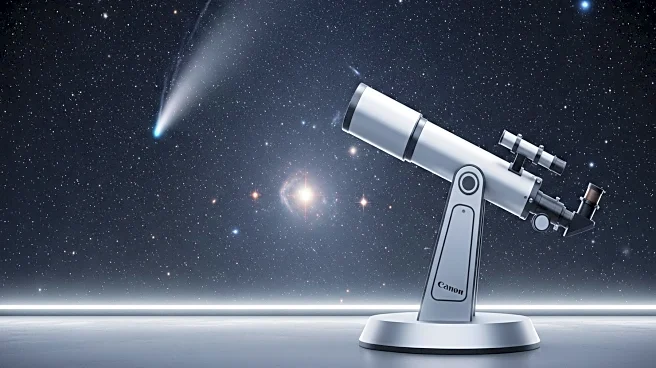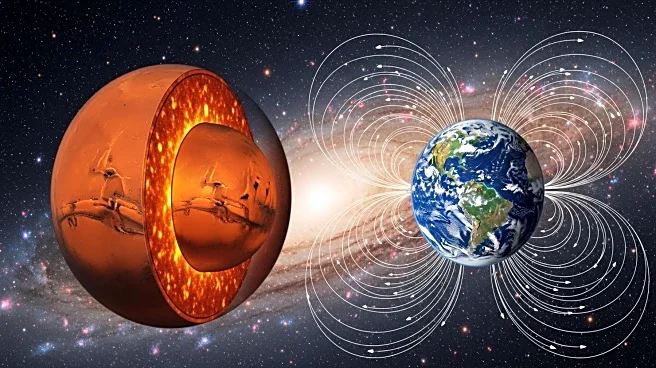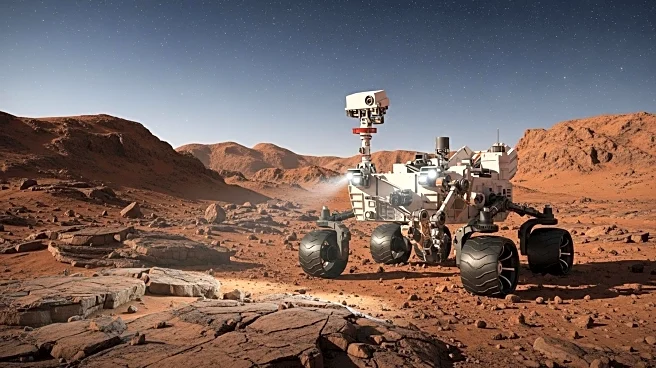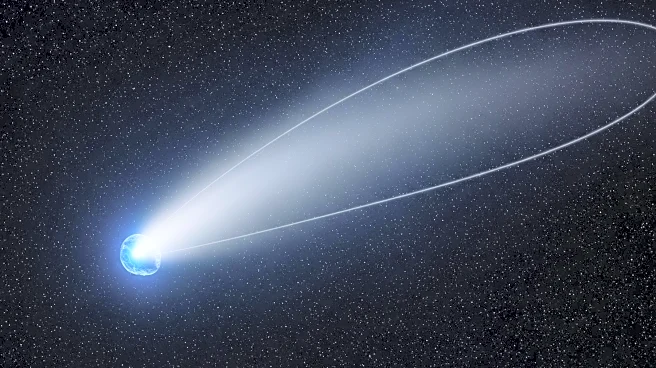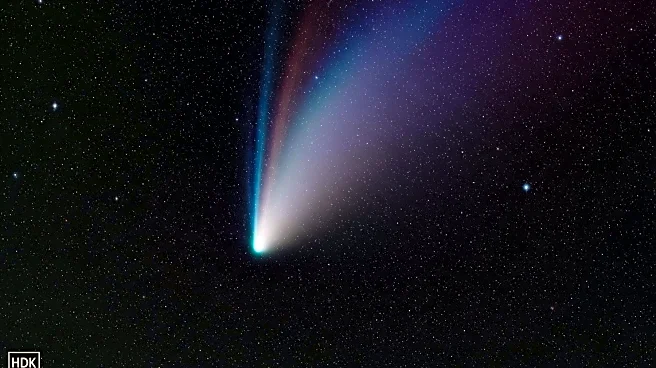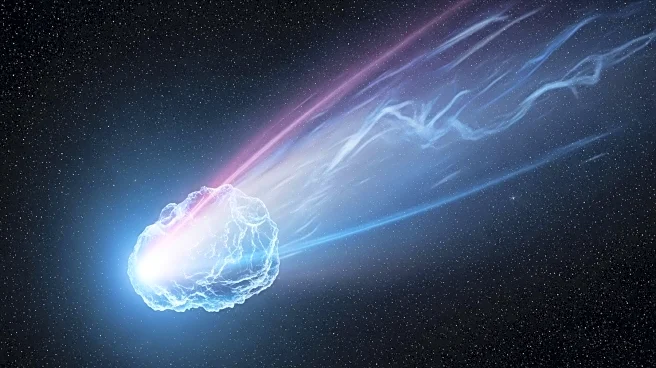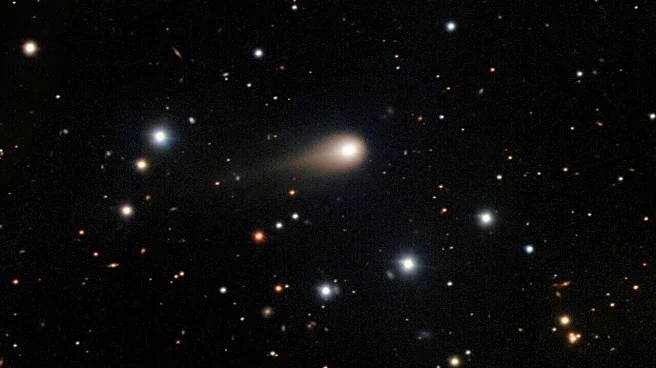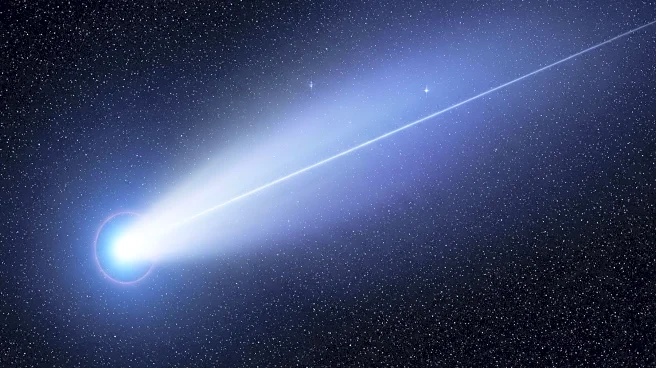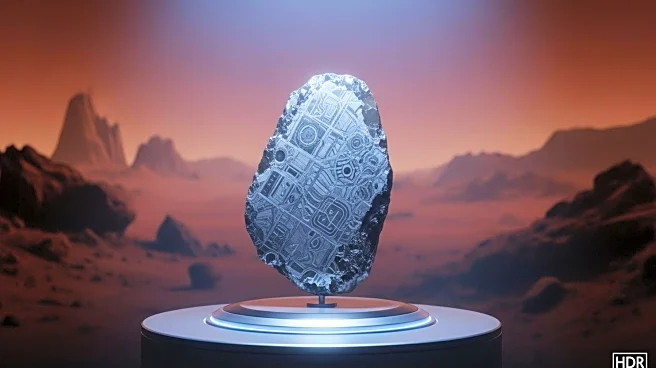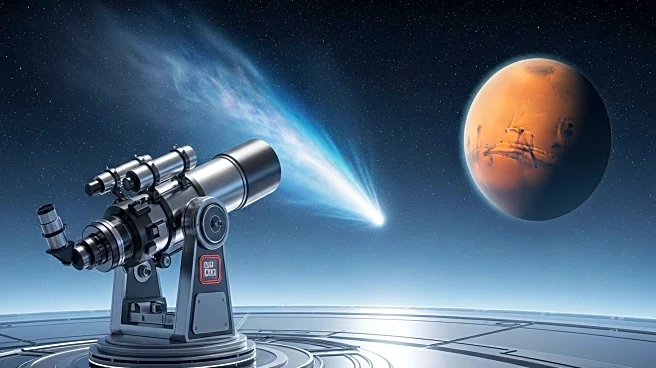What is the story about?
What's Happening?
A new image captured by the International Gemini Observatory in Chile shows the growing tail of Comet 3I/ATLAS, an interstellar object passing through our solar system. The image was taken during a public outreach event, allowing students to work with astronomers. Comet 3I/ATLAS, discovered in July, is the third-known interstellar object to enter our solar system. The comet's tail, formed by solar radiation, spans about 1/200th of a degree in the sky and points away from the sun. The observatory session aimed to analyze the comet's spectrum to understand its composition and chemistry.
Why It's Important?
The observation of Comet 3I/ATLAS provides valuable data on interstellar objects, which are rare and offer insights into materials from other star systems. Understanding the chemical composition and activity of such comets can reveal information about planetary formation processes beyond our solar system. This contributes to the broader scientific knowledge of the galaxy's dynamics and the diversity of celestial bodies. The public outreach aspect of the observatory session also emphasizes the importance of engaging the community in scientific exploration.
What's Next?
Comet 3I/ATLAS is expected to make its closest approach to the sun in late October, passing between the orbits of Mars and Earth. It will remain visible through September before becoming too close to the sun to observe. The comet will reappear on the other side of the sun in early December, providing further opportunities for observation and study.
Beyond the Headlines
The study of interstellar comets like 3I/ATLAS not only advances scientific understanding but also inspires wonder and curiosity about the universe. These fleeting visitors remind us of the vastness and complexity of the galaxy, encouraging continued exploration and discovery.
AI Generated Content
Do you find this article useful?
